

| Circe
| Thursday, March 18, 2010 With all the wood for the cabin sole now installed, I could move forward with the last part of the installation: filling the seams with blackened epoxy. Before beginning, I did some sanding to even out some of the transitions between the wooden strips, particularly on the curved areas of the hull. Relieving some of the expected disparity in heights and angles now would reduce the amount of epoxy to install, and make the final sanding easier when all was said and done. I used a variety of tools and hand work to sand the areas in question. |
|
I decided to take the time to mask off the wooden strips before applying the epoxy. Honduras mahogany features an open grain, and I didn't want to risk the black epoxy infiltrating the pores and becoming difficult to clean up. Also, masking the wood would greatly reduce the sanding required afterwards, and limit the quantity if the fine, black, staining dust that results from sanding the graphite-modified epoxy. I also masked the ends of the area as well, to prevent marring the finished bulkheads. I began in the head, both as a test for my masking technique and because, being all the way forward, it was the logical place to start. After masking all the wood, I installed blackened, thickened epoxy between the planks, squeegeeing it into place and removing the excess. |
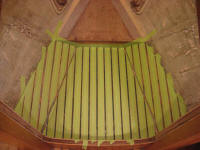
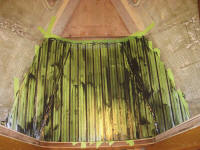 |
|
Once all the seams were filled, I removed the masking tape, which left clean edges and clean wood behind. Clearly this was well worth the effort. |
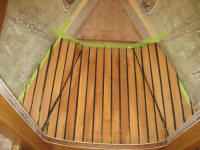 |
|
Next, I repeated the overall process in the main cabin, beginning with the tape. I transferred a line from the tops of the planks to the adjacent settee fronts, and masked off this line, as well as along the forward ends of the planks. Then, I covered all the plank surfaces with tape. |
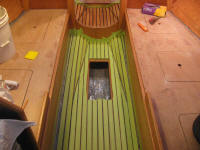
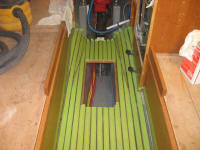 |
|
I covered the settee fronts and settees with plastic, and spent the remainder of the day filling and squeegeeing the seams. I left the gap in front of the stove intentionally free of epoxy, so that the panel containing the water pumps could be removed in the future as necessary; later, I'd paint this area black to match the seams. |
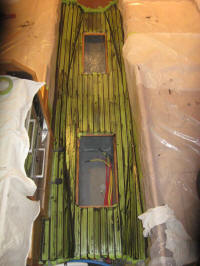 |
|
Once I'd filled all the seams, I removed the masking tape. |
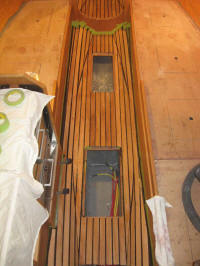 |
|
To round out the day, I repeated the process on the two cabin sole hatches. |
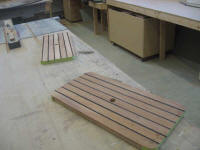 |
|
In other news, I picked up the new, longer rudder shaft from the machine shop: the shaft had to be 26-1/4" longer than the original in order to bring it up to its new connection point on the aft deck. |
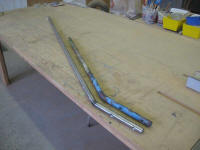 |
|